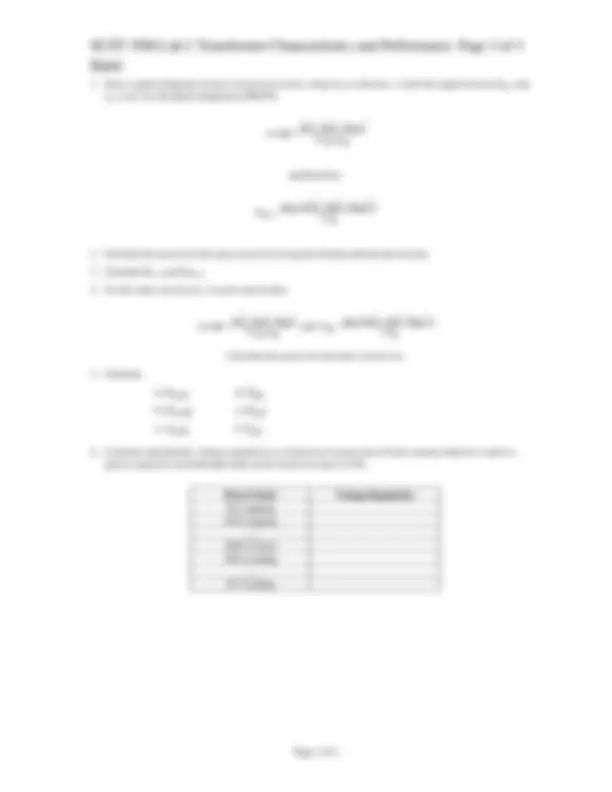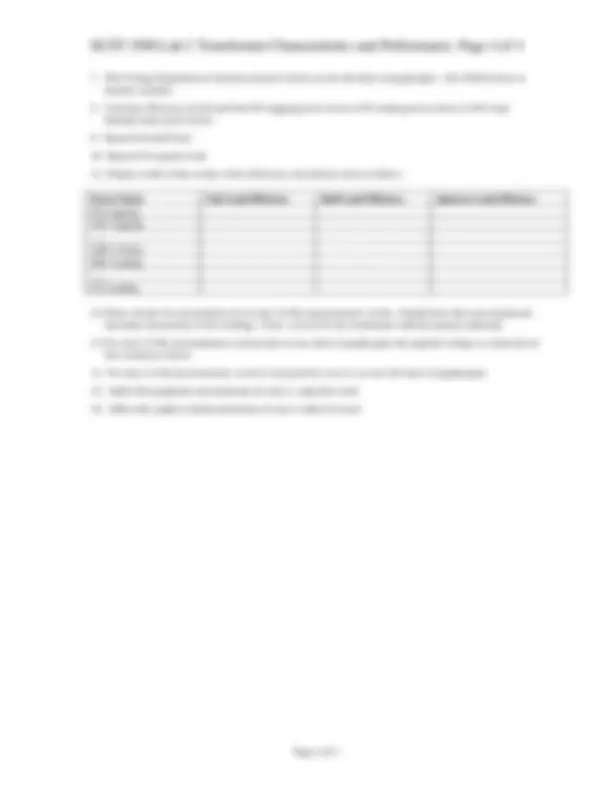




Study with the several resources on Docsity

Earn points by helping other students or get them with a premium plan


Prepare for your exams
Study with the several resources on Docsity

Earn points to download
Earn points by helping other students or get them with a premium plan
Community
Ask the community for help and clear up your study doubts
Discover the best universities in your country according to Docsity users
Free resources
Download our free guides on studying techniques, anxiety management strategies, and thesis advice from Docsity tutors
Material Type: Lab; Class: Survey of Electric Machines; Subject: Electrical&Computer Eng Tech; University: Southern Polytechnic State University; Term: Unknown 1989;
Typology: Lab Reports
1 / 4

This page cannot be seen from the preview
Don't miss anything!



Before making any electrical connections, draw an appropriate test circuit including instruments. Have your instructor check and initial this proposed circuit, before connections are made. Before applying power to the circuit, have your instructor check the wiring.
All laboratory work will involve the EMS ________ Transformer Module
Ep(V) IP(mA) 0 20 40 60 80 100 120 140 160 180 200
I. Determine the polarity of winding 5-6 relative to winding 1 - a. Set V 12 to 10 V and then measure V 56 b. Connect terminal 2 to terminal 6 and measure V 15 c. Remove the connection from terminal 2 to terminal 6 d. Connect terminal 2 to terminal 5 and measure V 16 e. Turn the power OFF and remove all connections to the transformer II. Determine the polarity of winding 3-4 relative to winding 1 - a. Set V 12 to 10 V and then measure V 34 b. Connect terminal 2 to terminal 4 and measure V 13 c. Remove the connection from terminal 2 to terminal 4 d. Connect terminal 2 to terminal 3 and measure V 14 e. Turn the power OFF and remove all connections to the transformer III_. Determine the polarity of winding 5-6 relative to winding 3 -_ a. Set V 34 to 10 V and then measure V 56 b. Connect terminal 4 to terminal 6 and measure V 35 c. Remove the connection from terminal 4 to terminal 6 d. Connect terminal 4 to terminal 5 and measure V 36 e. Turn the power OFF and remove all connections to the transformer
Power Factor Full-Load Efficiency Half-Load Efficiency Quarter-Load Efficiency 0% Lagging 10% Lagging ….. 100% (Unity) 90% Leading ….. 0% Leading